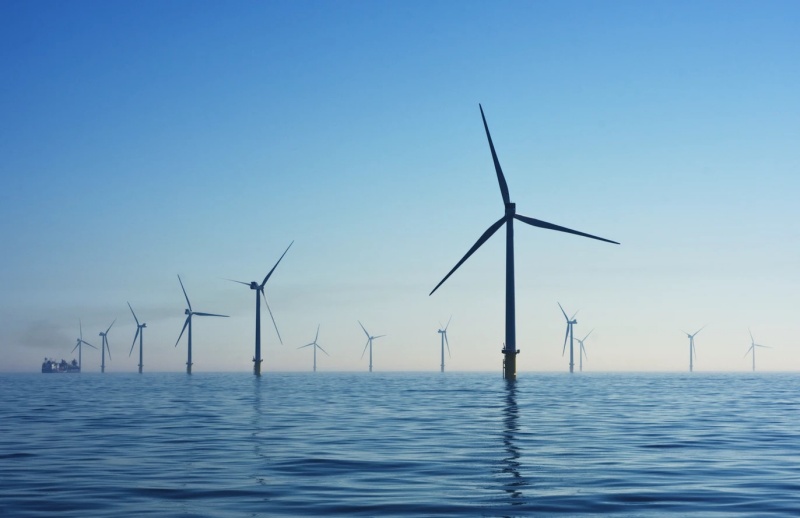How to Start Your Career Working in Offshore Wind Farms


In the arena of renewable energy, wind is one of the fastest growing sectors, only behind hydroelectric in terms of power generated. By 2050, it’s expected to supply up to a third of the world’s electricity. Both developed and emerging countries are building their own wind farms, buoyed up by the decreasing costs of parts.
Wind energy can only grow in uptake and the sector’s biggest drivers of capacity and employment opportunities may not come from the onshore farms many of us are familiar with, but from offshore.
Here's everything you need to know about offshore wind, and how you can land a job in this exciting field.
A Growing Career Opportunity
Offshore wind is currently a small part of the entire wind sector, accounting for less than 10 percent of overall power capacity. But experts anticipate that to change. Globally, forecasts are favourable. Vestas CEO Philippe Kavafyan predicts offshore to contribute 1,400 GW in capacity within the next 30 years.
The offshore wind industry is an exciting field that can take one all over the world, from Germany to China. And as the leading offshore market in the world, many farms are in our own waters. There are currently thousands of turbines already in operation, with even more planned as the country pushes to meet its ambitious net zero carbon emissions goal by 2050.
The increase of construction will create large labour demands across the UK. Many will be concentrated along regions near the sea, such as Scotland and the East of England. The latter is also where you can find Dogger Bank Wind Farm, which is expected to power 5 million homes in 2023.
A Huge Demand for Skilled Labour
It takes a gargantuan effort to build and maintain an offshore wind farm. In fact, half of the wind energy jobs in the UK are for offshore wind. And it’s not just a large job order, but a lasting one: the average lifespan of a farm from designing to decommissioning is 30 years or longer.
Such large scale projects create numerous short and long-term specialist roles, scattered across the different substations and life stages of a wind farm. The industry is expected to create 900,000 jobs or more in the next decade, according to the Global Wind Energy Council.
Many of the jobs will be open to individuals from different backgrounds, from ex-military personnel to qualified plumbers. Below are just some of the roles that will make up the near-million strong job workforce in offshore wind:
-
Site Manager and Supervisors
-
Project Engineers
-
Quality Control and Assurance Specialists
-
Electrical Technicians
-
Oceanographers
-
Geophysicists
-
Technical Trainers
The immediate need will be for technicians and engineers. However, as the sector matures and more farms become operational, expect to find more roles related to business and communications management.
Getting your Start in Offshore Wind
While there’s a high demand for talent in the offshore wind sector, the field is also fairly exacting in skill qualifications. Research and thorough preparation are essential for getting the job you want.
Find your niche
There are numerous companies in the offshore wind industry, handling every stage of the pipeline from design and installation to maintenance and dismantling. Improve your chances of landing the job you want by identifying what these companies do. You’ll find manufacturers like Siemens Gamesa and Vesta making components, installing turbines, and providing maintenance services. Utility companies like Ørsted, E.On, and Vattenfall actually own the farms and manage production.
Upgrade your skills and get certified
The skills needed on farms are often transferable for people coming from science, engineering, and construction backgrounds. But if you’re coming in from a different field other than wind, you will want to get the appropriate certifications to give you a competitive edge over other candidates. The offshore wind industry will create thousands of jobs in the future, but many of these will be reserved for those with Global Wind Organisation (GWO) training. Improve your chances of getting hired by getting certified at an accredited training centre.
Consider applying for an apprenticeship
The demand for talent in offshore wind will be high, and the pool for qualified workers not already employed in related sectors, limited. To prevent a shortage of skilled staff in the future, many companies including Ørsted and MHI Vestas are focusing on internal talent development through apprenticeship schemes. Companies can also offer retraining programmes for individuals from technically related fields.
Identify your availability
Farms employ a wide variety of staff, including contractual workers. Some companies hire out at 3 to 4 months for temporary roles. Individuals looking for more permanent employment options need to consider relocating to be nearer the farms, or the possibility of getting assigned to sites overseas. You may also be required to live on service operation vessels, particularly if you’re applying for a maintenance-related role.
Research before reaching out
Applying to companies at the forefront of offshore wind can be as deceptively simple as uploading your CV to their site. But it’s a young, competitive, and rapidly evolving field. It’s moving so fast that installing a new turbine is currently more economical than fitting an old one with new technology. So you’re going to want to upgrade your resume with relevant and up-to-date skills and experiences. Some positions require Master’s Degrees and certain certifications. Looking into the current projects of your potential employer can also help you make the right impression.
The next couple of years will be a period of fast growth and large investments for offshore wind. Career opportunities abound. But as is with every successful job application, individuals seeking a start in the sector will need to upgrade their skills, get the proper certifications, and build relevant experience to get their foot in the door of the field’s top companies.